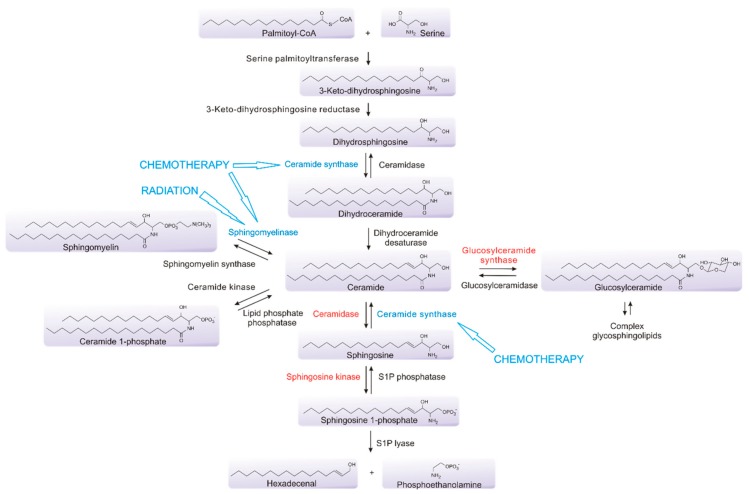Figure 2.
Sphingolipids act as critical bioactive signaling molecules to determine many aspects of cell fate and function. Central to the sphingolipid pathway is ceramide, a key mediator of the apoptotic response of cells to radiation and chemotherapeutic drugs. Ionizing radiation activates acid SMase to induce the conversion of sphingomyelin to ceramide. Chemotherapies including TMZ promote ceramide accumulation through multiple mechanisms, including the activation of ceramide synthases and N-SMase (shown in blue). Enhanced activity of other key enzymes involved in sphingolipid metabolism, including acid ceramidase, sphingosine kinases or glucosylceramide synthase (shown in red), represent mechanisms which GBM cells exploit to overcome existing therapies through reducing therapy-induced ceramide accumulation.

